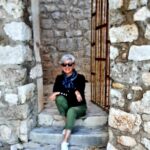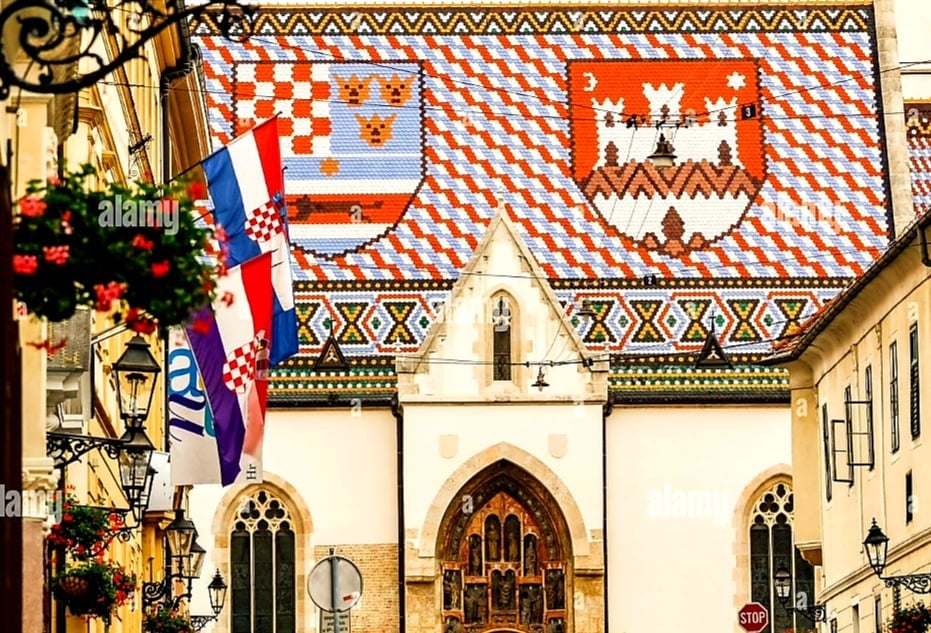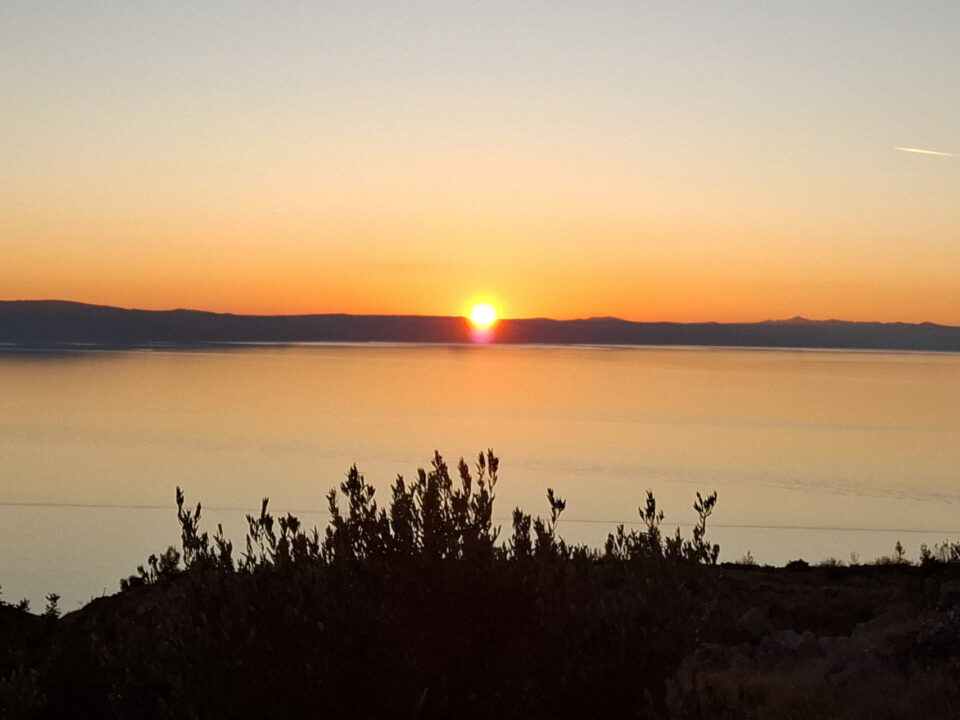
Luxury Cruising in Croatia
November 2, 2021
Biokovo-Imotski Lakes Day Tour
February 14, 2022A 9-day hiking trail on the island of Brač for 4-8 hikers, with an extra day in Split, has opened up this island?s sheer beauty to lovers of active holidays, and sustainable tourism. The spectacular trail is 140 kilometers in length, connecting the whole island, with many exceptional locations, passing through a large number of small villages lost in time, olive groves, vineyards, and pristine seaside towns with the final two days and evenings spent in Split. Together with Andrea Tomas and friends at Explore Brač, and with the added support of Brač Tourism we are delighted to offer our 10-day fully guided walking tour including B&B accommodation and a daily meal, for your consideration. POA depends on the number of participants.
Contact Robyn Vulinovich at My Hidden Croatia Email: myhiddencroatia@gmail.com Mobile: +385 998280102 Photos courtesy Maja Zlokić at HOT SPOTS Magazine www.hotspots.net.hr and Robyn Vulinovich at MY HIDDEN CROATIA.

By joining a privately guided walk to all of the locations listed on the map with blue and white markers, you’ll be able to celebrate getting through each section with a stamp. Your guide will enhance the walk, adding informative information about local culture, history, flora and fauna, the way of life here on Island Brač, and stories from the past.



The Škrip Museum takes us back to the time of the Illyrians! The remains of their fort are located in the courtyard, built in the Middle Ages. The museum houses valuable collections, archeological, and ethnographical. The Cathedral of Ložišća is a must-see! The girls are in awe of the scene below them.
There are a number of places on Island Brač that are not to be missed if you want to experience the atmosphere of the island to the fullest, gain an insight into its rich history and scattered cultural treasures, get to know the shoreline, the interior, learning about the lives of the inhabitants, and many of these places of interest have been included in these 8 days of hiking: Blaca Hermitage, Škrip Museum, Olive Oil Museum, The Dominican Monastery in Bol, Zlati Rat, The Dragon Cave Hermitage, The Stonemasonry School in Pučišća, Church of St. Jerome in Pučišća, Polvja Basilica, Ložišća Cathedral, Lovre?ina and the Basilica of St. Lawrence, and a number of medieval miniature stone chapels scattered all over Brač standing apart from the villages on top of hills or among the olives groves. All waiting for you during your week of plentiful fresh air, seasonal fresh food, fresh fish, local cheeses, and loads of Dalmatian hospitality.



There are 12 stamps to be found along the trail, mostly at village churches and monasteries. The stamps will attest to your success, and at the end of the road will create a real picture, the coat of arms of the island of Brač, and in it the figure of St. George, the patron saint of this island in the famous scene of George slaying the dragon.
VIA BRATTIA tells the truly amazing story of Island Brač. It starts in Supetar, where you can walk through the streets where the famous sculptor Ivan Rendić, the father of modern Croatian sculpture, used to walk. A memorial collection of the artist’s sculptures, and drawings, is at the end of the harbour. Rendić was known by the locals as Škultur juvanin, the first Croatian bourgeois sculptor who paved the way towards modern sculpture.



The works of Ivan Rendić are plentiful on tombstones of noble families in the Supetar cemetery, particularly famous is the Pieta relief on the grave of the Franasović family.
Hiking 4 kilometers, Supetar to the village of Škrip, we’ll come across the 6th-7th century early Christian church of Sveti Jadre (St. Andrew) Once in Škrip you’ll be immersed in the history and stories of the Illyrians, Romans, and Renaissance noblemen. Škrip is the most important archeological site on Brač and perhaps in all of Croatia! Nowhere can be found so many remnants of many cultures in such a small area.





In Škrip, a visit to the famous Olive Oil Museum is a must! We’ll hear all about how olive oil was produced in the past compared to the present, plus we’ll enjoy a delicious tasting of extra virgin olive oil and a superb lunch served with local wines. (always a highlight)
After lunch we’ll continue on our way, walking to Pučišća via Postira, but not before finding the first Via Brattia stamp located in Škrip! Pučišća is known as a pure hidden gem, so pristine, and tucked away in a seaside inlet. A town made of the white limestone of Brač. Nearby is the Veselje stone quarry, easily recognisable from the mainland. In the past, this was a harbour of towers, built-in defence of the marauding pirates of Omi?, and although most towers no longer exist, the fortified mansion of the Žuvetić family remains on the seafront, a fine example of what used to be.




Pučišća is well known for its School of Stone Masonry, which opened over 100 Years ago. In this town, everything is linked to stone. We’ll visit the school and meet some of the budding Michelangelos!
The white stone of Brač is well known throughout Europe and further afield. Most of the quarries were around the small town of seaside Splitska. From here the stone was extracted and shipped across to the mainland during the building of Roman Emperor Diocletian’s Palace in 305 AD in Split. During the Renaissance period, stone for mansions and villas in Dalmatia and Italy came from here. Parliament House in Budapest and the White House in Washington DC are both partially built of Brač stone.



Accommodation along the trail has been carefully chosen. Hotels, villas, and apartments oozing charm and comfort, together with friendly hospitality, have been personally inspected and secured.
The Cuisine of Brač...This was an island of hard-working farmers, shepherds, and fishermen from ages past. Needless to say, they ate frugally, while the nobility enjoyed a more lavish lifestyle and cuisine, indulging in the best cuts of meat, venison, and fish, while the poorer folk harvested the seasonal crops and fruits, making soups and stews, yet both groups ate very healthily. Many meals are made from legumes, such as beans, chickpeas, peas, or broad beans, however, the specialty of Brač is their lamb, known far and wide as being quite exquisite in taste and flavour due to the bura winds that blow hard, spreading the salt from the sea across the eastern side of the island, spraying the pastures of aromatic herbs, especially the sage, with sea salt. Fish and crustacean dishes (lobster and scampi, squid and cuttlefish) are plentiful and always so popular, whether on the grill, in a stew, as a casserole, or as a delicious risotto, while local cheeses are often served as an appetizer. The olive oil of Brač is also well known for its purity and high virgin quality, while figs, carob, and almonds are found growing all over the island.



On the eastern end of the island, the trail passes through Sumartin, and accommodation with the warmest hospitality will be at Villa Olive Tree. An overnight stay includes a sumptuous dinner prepared and grilled to perfection, thanks to owners Michelle and her husband Fabian.





On the Via Brattia Tour, daily breakfast is included, a daily substantial meal, plus a welcome and farewell dinner in Supetar and Split accordingly. In Škrip we’ll have lunch at the Olive Oil Museum and a lamb peka (Slowly baked over the hot coals) at a 300-year-old home in Smrka Bay, plus fresh fish platters in Sumatin. Other meals are optional and can be purchased along the way.


In Bol, an optional tasting of the fine wines of the Stina Vineyards Cellar can be arranged here in the centre of town. The Stina Po?ip (a white variety) and their Mali Plavac (Little Blue) are highly appreciated, which is the predominant variety of Dalmatia.
During the 15th and 16th centuries, there was a great deal of fighting between the Turks and the Venetians for the control of the mainland between Split and Omi?, causing priests and laypeople to flee across the channel to Island Brač. Some were taken into Island parishes, while others sought refuge in the caves on the southern shore of the island, and this is where we find the Blaca Hermitage. The first two priests, Juraj and Pavao Silvio, arrived here in 1450, carving motifs into the stone from St. John’s apocalyptic vision in the last book of the New Testament. Other hermitages sprung up, existing until the early 20th century. The trail passes by the Zmaljeva Cave Hermitage on the way up to Blaca Hermitage and from here we’ll be driven to Smrka Bay for a well-deserved and delicious Peka lunch. (Brač lambed roasted slowly under the iron bell, with all the trimmings.


Zmajeva Cave and Blaca Hermitage on the Southern side of Island Brač.
Our last evening on Island Brač will be spent in Milna on the Western shores. A medium-sized village that flourished in the time of sailing ships. It was the main port on the island, in a very long and sheltered bay. With the decline of sailing ships, many inhabitants of Milna immigrated to Chile and other South American countries. In the 20th century, nautical tourism became increasingly popular and today we find a very busy yachting marina.





Some of the picturesque villages along the way, villages frozen in time, remain as fine examples of how life was lived in those days of long ago. The church on the Milna waterfront, (top left-hand corner) Church of Our Lady of the Annunciation, was built in prosperous times and is richly decorated. It has one of the most beautiful altarpieces on the island, by the Venetian painter Gaspare Diziani.
On our final day on Island Brač, we’ll walk the trail by the sea through pinewood and olive groves between Milna, Ložišća, Bobovi??a, and Sutivan, collecting our final Via Brattia stamp at the little Church of St. Martin, high on a hill overlooking Sutivan with magnificent views of Split and the magnificent mountain range of Mosor across the channel on the mainland. Late lunch in Supetar at Restaurants Punta, Vinotoka, or Palute is highly recommended. From here we’ll take the local ferry back to Split, the capital of Central Dalmatia.



Roman Emporer Diocletian’s palace is the heart and soul of old Split. Our ancient city, built-in 305 AD as the Emporer’s chosen place for retirement, remains one of the most well-protected historical sites from the Roman era. This is today where we work and play.
Your accommodation in Split is in the Old Town Centre area of the city, 2 minutes to the Split Riva, the walkway by the harbour, and to Diocletian’s Palace, the heart and soul of Split. On the last day of the tour, we’ll take you on a guided walk through the old town and palace area, including the underground palace cellars, the Cathedral of St. Dominus, patron saint of Split, The cathedral was originally built by Emperor Diocletian as his resting place, his Mausoleum, however, being a Roman persecutor of early Christians, his body was disposed of to a place unknown by followers of Christ, and the mausoleum was transformed into the Cathedral of Split. Various eras have come and gone, each leaving its own touch on the interior works of art, sculpture, and magnificent stonemasonry designs. You will appreciate this fact even more so after spending time on Island Brač from where the stone was transported all those centuries ago. We’ll visit the Split green market, and the fish market, and finally making our way through the narrow cobbled streets we’ll get to know more about past and present lifestyles in this atmospheric city.
This evening, our tour will draw to a close with a farewell dinner at a local restaurant which is a favourite with many locals and visitors alike, followed by a walk through Old Split by night.
Departure Day… A transfer to the Split airport will be arranged for the group. We hope you will have enjoyed this journey of discovery, exploring the Island of Brač, and learning about the way of life of its people in the past and in the present, its flora and fauna, history, culture, resilience, and zest for life. Dovi?enja, until we see you again.
Following are the comments and photos by Angela Ruzicka, Lynn Liddel Meacham and Darko Sojak, 3 members of our first group of 8 experienced hikers from Oregon USA…..22-31 May 2022. A delightful group of people who enjoy the outdoors and the wonders of nature.
“On a trip with Obsidian friends to Croatia. For the first part of our trip, we?re hiking around the island of Brac. It?s incredibly beautiful here. Our hiking was on a route called the Via Brattia. The trail is marked simply with white and blue marks in a variety of configurations on a variety of surfaces. Really easy to follow!” https://www.dalmatia.hr/…/via-brattia-135km-of-hiking…/




“I decided to post a few more photos from our first day on the island of Brac where we stayed in the small town of Supetar. Beautiful churches and an incredible cemetery. Our guide Tino had a welcoming dinner set up for us at a lovely outdoor restaurant that featured some delicious local seafood. A wonderful way to start our Croatian experience.”







“A few photos from today’s hike as we continue our journey around the island of Brač. A pretty warm day but that didn’t slow us down too much. We probably hiked about 9 miles. I continue to marvel at this amazing landscape and the people who are so patient and friendly. Plus the food is almost too delicious. And of course an ice cream cone every evening. Tomorrow we continue on. Thanks to all my Obsidian hiking friends and our guide Tino who makes sure everything runs smoothly. The fun continues!”





“It’s been a lovely few days as we continue our way around the Island. We made the hike from Povlja to Sumartin through olive groves and ended at a delightful family-owned villa. We enjoyed a swim in the Adriatic Sea and the pool along with a tasty dinner of grilled fish. The next day was the most challenging due to the heat, length, and elevation. But we made it to Bol and had a rest day to rehydrate, do some laundry, and write some postcards. Today found us hiking along the coast, finding one stunning cove after another. We ended the afternoon at a magical spot with a traditional Dalmatian meal. I’m so appreciating the warmth of the Croatian people and my good-natured Obsidian hiking buddies Our hiking was on a route called the Via Brattia. The trail is marked simply with white and blue marks in a variety of configurations on a variety of surfaces. Really easy to follow!”











“On our final day on the island, we hiked up from Milna on the west coast and made our way inland and then back to the coast via Sutivan and caught the ferry in Supetar to go to Split. It was a 14-mile day and we were all happy to have a cold drink on the Ferry. In my photos, you have likely noticed a LOT of rock—buildings, walls along the trail, clumps—so much rock. When they cleared land for olives, grapes, and other crops they “got it out of the way” by using it to build. Practical and spectacular. Going from the island to the big city is a bit discombobulating at first, but settling into the rhythm”.






“Spent our day in Split wandering the city including going to the top of Marjan Park for a view and a walking tour of Diocletian’s Palace. Heading north this morning”….
For further enquires contact Robyn Vulinovich Email: myhiddencroatia@gmail.com Mobile: +385 998280102




